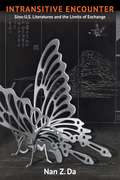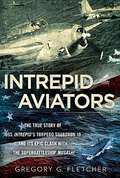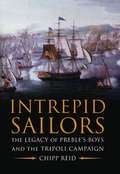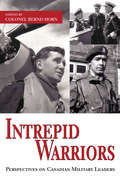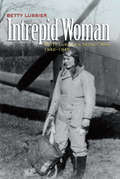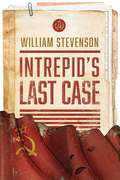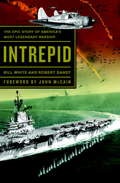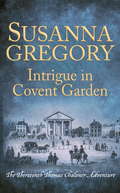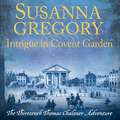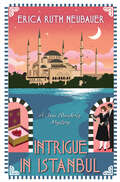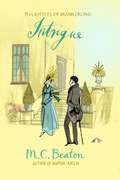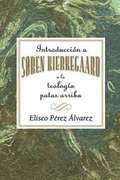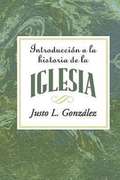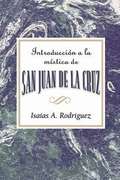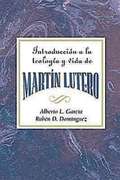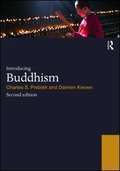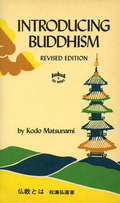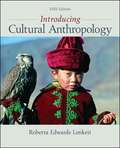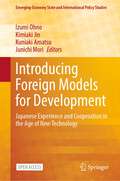- Table View
- List View
Intransitive Encounter: Sino-U.S. Literatures and the Limits of Exchange
by Nan DaWhy should the earliest literary encounters between China and the United States—and their critical interpretation—matter now? How can they help us describe cultural exchanges in which nothing substantial is exchanged, at least not in ways that can easily be tracked? All sorts of literary meetings took place between China and the United States in the nineteenth and early twentieth centuries, involving an unlikely array of figures including canonical Americans such as Washington Irving, Ralph Waldo Emerson, and Henry Wadsworth Longfellow; Chinese writers Qiu Jin and Dong Xun; and Asian American writers like Yung Wing and Edith Eaton. Yet present-day interpretations of these interactions often read too much into their significance or mistake their nature—missing their particularities or limits in the quest to find evidence of cosmopolitanism or transnational hybridity.In Intransitive Encounter, Nan Z. Da carefully re-creates these transpacific interactions, plying literary and social theory to highlight their various expressions of indifference toward synthesis, interpollination, and convergence. Da proposes that interpretation trained on such recessive moments and minimal adjustments can light a path for Sino-U.S. relations going forward—offering neither a geopolitical showdown nor a celebration of hybridity but the possibility of self-contained cross-cultural encounters that do not have to confess to the fact of their having taken place. Intransitive Encounter is an unconventional and theoretically rich reflection on how we ought to interpret global interactions and imaginings that do not fit the patterns proclaimed by contemporary literary studies.
Intrepid Aviators
by Gregory G. FletcherThe true story of the World War II Pacific naval battle that pitted the USS Intrepid's naval aviators against Japan's superbattleship Musashi. . . and made a dramatic difference in the Battle of Leyte Gulf. October 24, 1944: As World War II raged, six young American torpedo bombers were sent on a search-and-destroy mission in the Sibuyan Sea. Their target: the superbattleship Musashi, the pride of the Imperial Japanese Navy. The pilots were tasked with preventing the immense enemy warship from inflicting damage on American supply ships. Little did these men know that they had embarked on the opening round of history’s greatest-and last-epic naval battle. Two bomber crews launched in the first wave of attackers were shot out of the sky. Only pilot Will Fletcher survived the crash landing. Adrift at sea, Will made his way to land and escaped into the jungles of the Philippines, where he eluded capture by the Japanese with the help of Filipino guerrillas, whose ranks he joined to fight against their common enemy. Intrepid Aviators is the thrilling true story of these brave bomber pilots, their daring duel with the Musashi, and Will Fletcher’s struggle to survive as a guerrilla soldier. The sinking of Musashi inflicted a crucial blow in the Battle of Leyte Gulf and marked the first time in history that aviators sank a Japanese battleship on the high seas. MAIN SELECTION OF THE MILITARY BOOK CLUB INCLUDES PHOTOGRAPHS .
Intrepid Sailors
by Chipp ReidReid tells one of the greatest sea stories in the history of the U.S. Navy. Under Commodore Edward Preble, the Navy came of age fighting the scourge of the time, the infamous Barbary Pirates. Intrepid Sailors chronicles the Navy's campaign to subdue the pirate leader of Tripoli, who declared war on the United States in 1801. After two failed campaigns, Preble took command of the U.S. squadron in the Mediterranean and served notice to world the U.S. Navy would be a force with which to reckon.Among the ships in Preble's flotilla was a non-descript little ketch. Once a French supply boat, the ketch served Tripoli until the U.S. squadron captured her in 1803. Upon her capture, Preble incorporated the little boat into his force, re-naming her the Intrepid. She was the first ship in the United States Navy to bear the name of Intrepid and would play a central role in some of the primary feats of "Preble's Boys."The exploits of the officers and sailors in this campaign are the stuff of legend. In culling myth from fact, Reid went back to original sources, using the words of the men in the campaign to tell their story. Whether it is Decatur leading the daring raid to burn the captured frigate Philadelphia or the escape attempts of American prisoners in Tripoli, Intrepid Sailors brings to life a story many Americans once widely knew but that today has become little more than footnote.Unlike other books on the topic, however, Intrepid Sailors delves into the development of officers and sailors under Preble. Most were half the age of their commander and few had major combat experience. Under Preble, these men forged a legacy of professionalism to which the Navy still adheres. The book also examines one of the most famous friendships in American and Navy history - that of Decatur and Somers. Their thirst for glory and utter devotion to making the U.S. Navy a permanent, respected force inspired all around them but that quest for immortality never caused a breach in their friendship. Instead, that friendship grew stronger, providing even more inspiration. Intrepid Sailors offers a rare insight into the lives of men who today loom larger-than-life and who continue to inspire each new class of naval officer. Stephen Decatur, Richard Somers, Charles Stewart, James Lawrence, Edward Preble and a pantheon of early U.S. Navy heroes all come to life.
Intrepid Warriors: Perspectives on Canadian Military Leaders
by Colonel Bernd HornCommand and leadership are very personal endeavours. The manner in which an individual commands others and exercises leadership speaks more to the character and personality of the individual in question than it does to the concept of command or leadership in and of themselves. Intrepid Warriors takes an intimate look at a number of Canada’s finest military commanders and leaders during the crucible of war. Collectively, the chapters in this volume offer invaluable insights into different command and leadership approaches, behaviours, and styles. They also reinforce the timeless truth that the character and presence of courageous leaders are critical to military outcomes, particularly during times of ambiguity, uncertainty, and chaos.
Intrepid Woman
by Betty LussierA college student in Maryland when World War II began, Betty Lussier went to England to help the British fight off an impending invasion. Armed with a private pilot s license, she joined the Air Transport Auxiliary and was soon ferrying planes and pilots for the RAF, and her memoir describes those days in thrilling detail. After the Normandy invasion, when women pilots were barred from delivering planes to the combat zones on the continent, she complained to Sir William S. Stephenson, who was in the RAF with her father in World War I and headed British intelligence in the States. He steered her to the newly formed American Office of Strategic Services, which was recruiting field agents. Her experiences with a special liaison unit in Algeria, Sicily, Italy, and France helping to set up a chain of double agents and transmit misinformation to the enemy are described in compelling detail as she takes the reader step-by-step through some memorable cases that helped bring the war to an end.
Intrepid's Last Case (Lyons Press Ser.)
by William StevensonIntrepid's Last Case chronicles the post-World War II activities of Sir William Stephenson, whose fascinating role in helping to defeat the Nazis was the subject of the worldwide bestseller A Man Called Intrepid. Sir William Stephenson (Intrepid) still stood at the center of events when he and author William Stevenson discussed in the 1980s an investigation into sudden allegations that Intrepid's wartime aide, Dick Ellis, had been both a Soviet mole and a Nazi spy. They concluded that the rumors grew, ironically, from Intrepid's last wartime case involving the first major Soviet intelligence defector of the new atomic age: Igor Gouzenko. Intrepid saved Gouzenko and found him sanctuary inside a Canadian spy school. Gouzenko was about to make more devastating disclosures than those concerning atomic espionage when the case was mysteriously terminated and Intrepid's organization dissolved. Unraveling the implications of Gouzenko's defection and Intrepid's removal from the case, tracing the steps of Dick Ellis and disclosing much new information regarding United States and Canadian postwar intelligence activities, Intrepid's Last Case is a story that for sheer excitement rivals the best spy fiction--and is all the more important because every word is true. Filled with never-before-revealed facts on the Soviet/Western nuclear war dance and a compelling portrayal of the mind of a professional spy, Intrepid's Last Case picks up where the first book ended, at the very roots of the cold war. It describes one of the most widespread cover-ups and bizarre betrayals in intelligence history. This is the incredible Intrepid against the KGB.
Intrepid: The Epic Story of America's Most Legendary Warship (Redbooks)
by John Mccain Bill White Robert GandtThe first official history of the legendary aircraft carrier that fought in World War II and Vietnam and continues to serve as a major air and space museum in New York CityThe USS Intrepid is a warship unlike any other. Since her launching in 1943, the 27,000-ton, Essex-class aircraft carrier has sailed into harm's way around the globe. During World War II, she fought her way across the Pacific--Kwajalein, Truk, Peleliu, Formosa, the Philippines, Okinawa--surviving kamikaze and torpedo attacks and covering herself with glory. The famous ship endured to become a Cold War attack carrier, recovery ship for America's first astronauts, and a three-tour combatant in Vietnam. In a riveting narrative based on archival research and interviews with surviving crewmen, authors Bill White and Robert Gandt take us inside the war in the Pacific. We join Intrepid's airmen at the Battle of Leyte Gulf, in October 1944, as they gaze in awe at the apparitions beneath them: five Japanese battleships, including the dreadnoughts Yamato and Musashi, plus a fleet of heavily armored cruisers and destroyers. The sky fills with multihued bursts of anti-aircraft fire. The flak, a Helldiver pilot would write in his action report, "was so thick you could get out and walk on it." Half a dozen Intrepid aircraft are blown from the sky, but they sink the Musashi. A few months later, off Okinawa, they again meet her sister ship, the mighty Yamato. In a two-hour tableau of hellfire and towering explosions, Intrepid's warplanes help send the super-battleship and 3,000 Japanese crewmen to the bottom of the sea. We're next to nineteen-year-old Alonzo Swann in Gun Tub 10 aboard Intrepid as he peers over the breech of a 20-mm anti-aircraft gun. He's heard of kamikazes, but until today he's never seen one. Swann and his fellow gunners are among the few African Americans assigned to combat duty in the U.S. Navy of 1944. Blazing away at the diving Japanese Zero, Swann realizes with a dreadful certainty where it will strike: directly into Gun Tub 10.The authors follow Intrepid's journey to Vietnam. "MiG-21 high!" crackles the voice of Lt. Tony Nargi in his F-8 Crusader. It is 1968, and Intrepid is again at war. Launching from Yankee Station in the Tonkin Gulf, Nargi and his wingman have intercepted a flight of Russian-built supersonic fighters. Minutes later, after a swirling dogfight over North Vietnam, Nargi--and Intrepid--have added another downed enemy airplane to their credit. Intrepid: The Epic Story of America's Most Legendary Warship brings a renowned ship to life in a stirring tribute complete with the personal recollections of those who served aboard her, dramatic photographs, time lines, maps, and vivid descriptions of Intrepid's deadly conflicts. More than a numbers-and-dates narrative, Intrepid is the story of people--those who sailed in her, fought to keep her alive, perished in her defense--and powerfully captures the human element in this saga of American heroism.
Intrigue in Covent Garden: The Thirteenth Thomas Chaloner Adventure (Adventures Of Thomas Chaloner Ser.)
by Susanna GregoryBy January 1666, the plague has almost disappeared from London, leaving its surviving population diminished and in poverty. The resentment against those who had fled to the country turns to outrage as the court and its followers return, their licentiousness undiminished. The death of a well-connected physician, the mysterious sinking of a man-of-war in the Thames and the disappearance of a popular courtier are causing concern to Thomas Chaloner's employer. When instructed to investigate them all, he is irritated that he is prevented from gaining intelligence on the military preparations of the Dutch. Then he discovers common threads in all the cases, which seem linked to those planning to set a match to the powder keg of rebellion in the city.Battling a ferocious winter storm that causes serious damage to London's fabric, Chaloner is in a race against time to prevent the weakened city from utter destruction.
Intrigue in Covent Garden: The Thirteenth Thomas Chaloner Adventure (Adventures of Thomas Chaloner #13)
by Susanna GregoryIn the thirteenth historical adventure by Susanna Gregory, Chaloner faces a barrage of problems in the latest case for the 17th-century spy-----------------------------------By January 1666, the plague has almost disappeared from London, leaving its surviving population diminished and in poverty. The resentment against those who had fled to the country turns to outrage as the court and its followers return, their licentiousness undiminished. The death of a well-connected physician, the mysterious sinking of a man-of-war in the Thames and the disappearance of a popular courtier are causing concern to Thomas Chaloner's employer. When instructed to investigate them all, he is irritated that he is prevented from gaining intelligence on the military preparations of the Dutch. Then he discovers common threads in all the cases, which seem linked to those planning to set a match to the powder keg of rebellion in the city.Battling a ferocious winter storm that causes serious damage to London's fabric, Chaloner is in a race against time to prevent the weakened city from utter destruction.
Intrigue in Covent Garden: The Thirteenth Thomas Chaloner Adventure (Adventures of Thomas Chaloner #13)
by Susanna GregoryBy January 1666, the plague has almost disappeared from London, leaving its surviving population diminished and in poverty. The resentment against those who had fled to the country turns to outrage as the court and its followers return, their licentiousness undiminished. The death of a well-connected physician, the mysterious sinking of a man-of-war in the Thames and the disappearance of a popular courtier are causing concern to Thomas Chaloner's employer. When instructed to investigate them all, he is irritated that he is prevented from gaining intelligence on the military preparations of the Dutch. Then he discovers common threads in all the cases, which seem linked to those planning to set a match to the powder keg of rebellion in the city.Battling a ferocious winter storm that causes serious damage to London's fabric, Chaloner is in a race against time to prevent the weakened city from utter destruction.
Intrigue in Istanbul (A Jane Wunderly Mystery #4)
by Erica Ruth NeubauerThe latest installment in the new Jane Wunderly Mystery series featuring an American widow turned private investigator in 1920s England. When vibrant American widow Jane Wunderly arrives in 1920s Turkey in search of her father, she finds a country redefining itself after the fall of the Ottoman Empire—and a deadly criminal who can&’t escape the past . . . Istanbul, 1926: After her archeologist father makes a clandestine journey abroad, Jane and the dapper Mr. Redvers trace his footsteps while signs of danger loom back home in the United States. They&’re greeted at their destination by Aunt Millie and unsettling news: Professor Wunderly was on a mission to locate the lost heart of Sultan Suleiman the Magnificent—a legendary relic from the Ottoman Empire said to possess potent mystical powers—then vanished completely, leaving behind his unpacked luggage, a perplexing riddle, and an eerie mystery Jane must solve to keep her loved ones safe. What starts off as a clear-cut investigation becomes an intercontinental game of cat and mouse as Jane realizes a gang of nameless figures have been stalking her every move from Turkey to Hungary. And it seems even helpful friends can&’t be trusted for long when a man is stabbed to death on the Orient Express to Budapest. With Redvers by her side and few clues to rely on, Jane&’s desperate search for her father leads to centuries-old secrets and an unidentified enemy who could make her disappear like the missing Sultan&’s heart . . .Erica Ruth Neubauer spent eleven years in the military, nearly two as a Maryland police officer, and one as a high school English teacher, before finding her way as a writer. She has been a reviewer of mysteries and crime fiction for publications such as Publishers Weekly and Mystery Scene Magazine for several years, andshe&’s a member of Sisters in Crime and Mystery Writers of America. Erica Ruth lives in Milwaukee, WI.
Intrigue: A Novel Of Regency England - Being The Second Volume Of The Daughters Of Mannerling (The Daughters of Mannerling Series #3)
by M.C. BeatonAs scandal and intrigue swirl around her, Jessica must discover where the heart finds true happiness. . . .Mannerling, the splendid family estate gambled away by Sir Beverley, remains the passion of his daughters. Beverley himself has died; the eldest daughter, Isabella -having failed in her bid to reclaim the family home--is blissfully wed. The mantle of saviour now falls to the next eldest daughter, Jessica.How fortunate then that the new owner of Mannerling had a marriageable son. In truth, Harry is a brutal letch, a drunkard, and a wastrel, but Jessica, blinded by determination, vows to secure a betrothal. She is barely aware of the attentions of handsome, charming Professor Robert Sommerville, whose affection for Jessica is equalled only by the fear that her obsession to secure Mannerling will lead to disaster for all concerned.As scandal and intrigue swirl around her, Jessica must discover where the heart finds true happiness. . . .
Intrigued (Skye's Legacy #4)
by Bertrice SmallBertrice Small's New York Times bestsellers have won the hearts of countless readers, time and time again. With INTRIGUED, Jasmine's spirited youngest daughter continues SKYE'S LEGACY as she learns the price of love- and desire. On her mother's advice, Lady Autumn Leslie leaves war-torn England for France in the hope of making a suitable match. The wealthy and handsome Marquis d'Auriville is all she could wish for in a husband, but when Autumn is widowed only a few years after they are wed, she believes she will never give her heart to another man. Yet as two kings-Louis XIV and Charles II-boldly bid for her affections, Autumn is plunged into the heady world of court intrigue, where powerful men will not hesitate to use a beautiful woman for their own ends-or barter her for their own pleasure. Yet it is Gabriel Bainbridge, the Duke of Garwood, a face from Autumn's past, who is determined to become her passionate, and only, destiny...
Introducción a Søren Kierkegaard, o la teología patas arriba AETH: Introduction to Soren Kierkegaard Upside Down Theology AETH (Spanish)
by Association for Hispanic Theological EducationEliseo Pérez Álvarez presenta en su libro a un Kierkegaard que va más allá de lo que leemos de él en muchas introducciones. Aquí, además, es el profeta, el denunciante de la injusticia social y de la hipocresía eclesiástica y religiosa. Eliseo "nos engancha entreteniéndonos con sus imágenes culinarias, al tiempo que nos lleva a reconocer cuanta razón tenía Kierkegaard en mucho de lo que dijo …"In this book, the author presents a Kierkegaard that goes beyond what we read of him in many textbooks. Aside from a look at Kierkegaard the prophet, the denouncer of the social injustice and of the religious and ecclesiastical hypocrisy, Álvarez treats readers to a detailed examination of the times that formed Kierkegaard’s teachings and philosphies.Eliseo Perez-Alvarez studied theology and philosophy in Mexico City, Atlanta, Chicago and Copenhagen. He has been professor, pastor, editor and coordinator for Hispanic Ministries in Mexico, USA, Puerto Rico and the Virgin Islands. He currently is an Associate Professor of Latino Theology and Mission at the Lutheran Seminary Program in the Southwest in Austin, Texas.
Introducción a la historia de la iglesia AETH: Introduction to the History of the Church Spanish
by Justo L. GonzalezIntroducción a la historia de la iglesia es una obra formidable en la que de manera amena, entretenida y sin dejar de ser académica, el Dr. Justo González repasa los acontecimientos fundamentales que sucedieron en la historia de la iglesia y que le han dado cuerpo. Este libro es fundamental como introducción para entender el porqué la iglesia tiene la forma que tiene en la actualidad, y servirá de base para cualquiera que desee adentrarse en los detalles de tan extensa y a veces complicada historia. Written in Spanish by the renown Hispanic author Justo L. González, this easy-to-understand and entertaining, yet academic introduction to the history of the church reviews the major events that happened in the history of the church and how they shape today’s church. This book is ideal for helping readers understand today’s church structure, and serves as guide for those interested in the extensive, and at times, complicated history of the church.
Introducción a la mística de San Juan de la Cruz AETH: An Introduction to the Mysticism of St. John of the Cross AETH (Spanish)
by Association for Hispanic Theological Education Isaias A. RodriguezSan Juan de la Cruz es el gran desconocido del pueblo cristiano. En los últimos cuarenta años han proliferado métodos de oración y meditación trascendental. Y es precisamente en esa búsqueda por encontrar una guía firme y permanente donde muchos se han topado con san Juan de la Cruz. Al paso que canta la belleza de la creación en sus sublimes poemas, el santo nos recuerda que toda la belleza creada es nada comparada con la divina. Quien renuncie a lo pasajero, superficial e ilusorio, se encontrará con el Todo de Dios. El libro que nos ofrece Isaías A. Rodríguez no pretende sustituir a san Juan en lo que pueda decirnos, sino que nos ayuda a entender lo que san Juan nos dice, a ver los caminos que va señalando, y a seguir las pautas para nuestra peregrinación que es la vida.Saint John of the Cross is the great unknown of the Christian community. The last forty years have seen a growth in prayer methods and transcendental meditation. The search for a guide that teaches such prayer and meditation practices have led many seekers to the teachings of Saint John of the Cross. Like a song that sings the beauty of the creation in its sublime poems, the Saint teaches us that all of the beauty of creation is nothing in comparison with the beauty of the divine. In this book, Isaías A. Rodriguez does not pretend to be able to substitute Saint John in what he can teach us, but he helps us to understand what Saint John says to us, to discover the roads that he shows us, and to stay on course for our life pilgrimage.
Introducción a la teología y vida de Martín Lutero AETH: An Introduction to the Theology and Life of Martin Luther Spanish
by Assoc for Hispanic Theological EducationExplores the formation and teachings of Martin Luther, examining his life, his times, and his writings
Introducing Asia (Introducing Continents Series)
by Anita Ganeri"Where is Mandarin spoken? Where do tigers live? What is the longest river in Asia? This book answers these questions and more as it introduces young readers to the continent of Asia through age-appropriate maps, engaging photographs, and simple text. Topics covered within the book include where the continent is, climate, geography, animals and plants, countries, people and languages, natural resources, cities, and famous places"--
Introducing Australia (Introducing Continents)
by Anita GaneriWhat is Uluru? What language is spoken in Australia? Where do koala bears live? This book answers these questions and more as it introduces young readers to the continent of Australia through age-appropriate maps, engaging photographs, and simple text. Topics covered within the book include where the continent is, climate, geography, animals and plants, countries, people and languages, natural resources, cities, and famous places.
Introducing Buddhism
by Damien Keown Charles S. PrebishIntroducing Buddhismis the ideal resource for all students beginning the study of this fascinating religious tradition. It explains the religion's key teachings and traces its historical development and geographical spread of from its foundations up to present day. Charles S. Prebish and Damien Keown, two of today's leading Buddhist scholars, devote a chapter each to the major regions where Buddhism has flourished - India, South-east Asia, East Asia and Tibet. In addition, contemporary concerns are discussed, including important and relevant topics such as Engaged Buddhism, Buddhist Ethics, Buddhism and the Western World and Meditation. This new edition includes more material on the different schools of Buddhism including explanations in graphic form, monastic life, popular religion, Buddhist ethics, ritual, the Bodhisattva Path, the Jatakas, the transmission of Buddhism, and class, gender and race. Introducing Buddhismincludes illustrations, extracts from original sources, summary boxes, questions for discussion, suggestions for further reading and a companion website at www. routledge. com/textbooks/9780415550017 Charles S. Prebishis Charles Redd Chair of Religious Studies at Utah State University. Damien Keownis Professor of Buddhist Ethics at Goldsmith's College, University of London. They are the editors of the Encyclopedia of Buddhism (Routledge, 2007).
Introducing Buddhism
by Kodo MatsunamiThis title was originally published in print form by Tuttle Publishing in 1976.This book, as the author explains in his preface, does not attempt to give an exposition of any particular thought from the authoritative point of view. It is rather, a collection of essays on Buddhism as understood by a Japanese student who sets out on a journey in search of his true self. As such ir expresses the author's desire to write a comprehensive book on Buddhism from within - a book that will lead the reader to an understanding of Buddhism as it existed in the past and continues to exist today.
Introducing Christianity
by Sally Bruyneel Alan G. PadgettThis book provides a remarkably compact and readable survey of Christianity. From basic religious concepts the authors go on to explore notions of sacred time and space and the distinctive attributes of Christian worship.
Introducing Computation to Neuroscience: Selected Papers of George Gerstein (Springer Series in Computational Neuroscience)
by Günther Palm Sonja Grün Ad Aertsen Pedro E. MaldonadoThis book brings together a selection of papers by George Gerstein, representing his long-term endeavor of making neuroscience into a more rigorous science inspired by physics, where he had his roots. Professor Gerstein was many years ahead of the field, consistently striving for quantitative analyses, mechanistic models, and conceptual clarity. In doing so, he pioneered Computational Neuroscience, many years before the term itself was born. The overarching goal of George Gerstein’s research was to understand the functional organization of neuronal networks in the brain. The editors of this book have compiled a selection of George Gerstein’s many seminal contributions to neuroscience--be they experimental, theoretical or computational--into a single, comprehensive volume .The aim is to provide readers with a fresh introduction of these various concepts in the original literature. The volume is organized in a series of chapters by subject, ordered in time, each one containing one or more of George Gerstein’s papers.
Introducing Cultural Anthropology (5th Edition)
by Roberta Edwards LenkeitIntroducing Cultural Anthropology, a short yet comprehensive anchor text, is an approachable, full-color introduction to cultural anthropology. This edition continues to provide students with the opportunity to explore anthropology's relevance to their own lives. Unique opening vignettes draw students into each chapter while the rich visual program allows professors to use a brief text without sacrificing visual appeal. "Try This" exercises encourage students to think critically and apply anthropological concepts, perspectives and methods, and the "Anthropology Around Us" boxes focus on the application of anthropological concepts featured in each chapter.
Introducing Foreign Models for Development: Japanese Experience and Cooperation in the Age of New Technology (Emerging-Economy State and International Policy Studies)
by Kimiaki Jin Izumi Ohno Kuniaki Amatsu Junichi MoriThis open access book studies how foreign models of economic development can be effectively learned by and applied to today’s latecomer countries. Policy capacity and societal learning are increasingly stressed as pre-conditions for successful catch-up. However, how such learning should be initiated by individual societies with different features needs to be explained. The book answers this pragmatic question from the perspective of Japan’s past experience and its extensive development cooperation in Asia, Africa, and Latin America. Since the late nineteenth century, Japan has developed a unique philosophy and method for adopting advanced technologies and systems from the West; the same philosophy and method govern its current cooperation with the developing world.The key concepts are local learning and translative adaptation. Local learning says that development requires the learner to adopt a proactive mindset and the goal of graduating from receiving aid. Meanwhile, translative adaptation requires foreign models be modified to fit local realities given the different structures of the home and foreign society. The development process must be wholly owned by the domestic society in rejection of copy-and-paste acceptance. These ideas not only informed Japan but are key to successful development for all. The book also asks how this learning method should—or should not—be revised in the age of SDGs and digitalization. Following the overview section that lays out the general principles, the book offers many real cases from Japan and other countries. The concrete actions outlined in these cases, with close attention to individual growth “ingredients” as opposed to general theories, are crucial to successful policy making. The book contains materials that are highly useful for national leaders and practitioners within developing countries as well as students of development studies.
